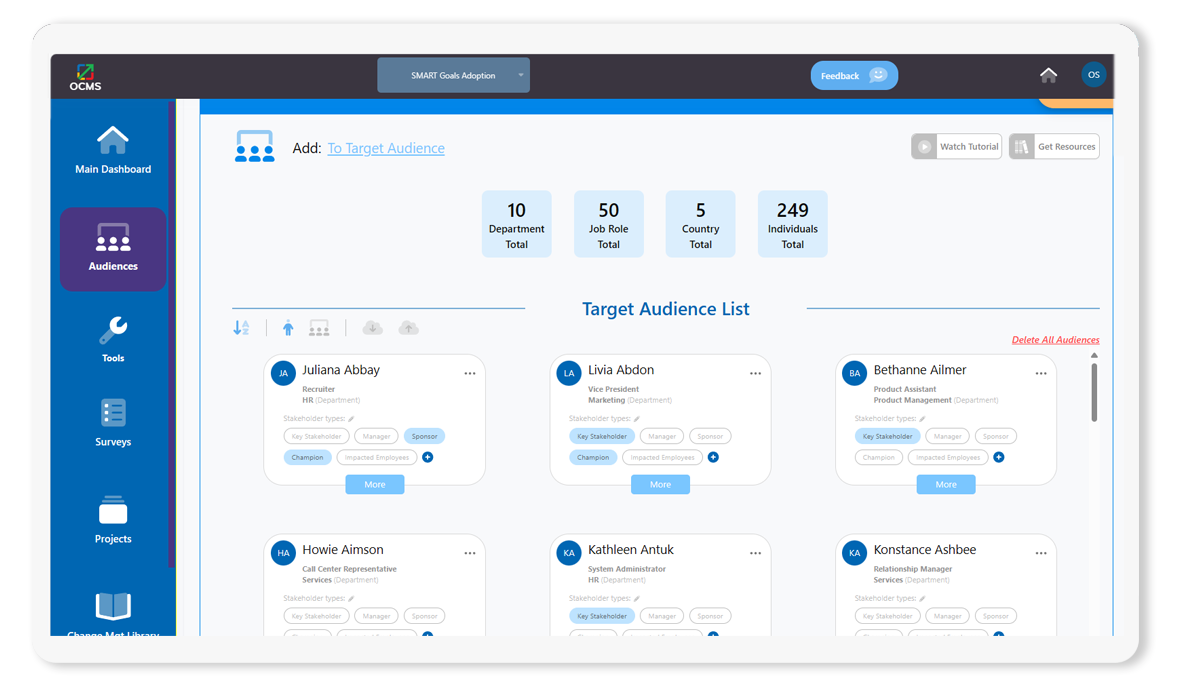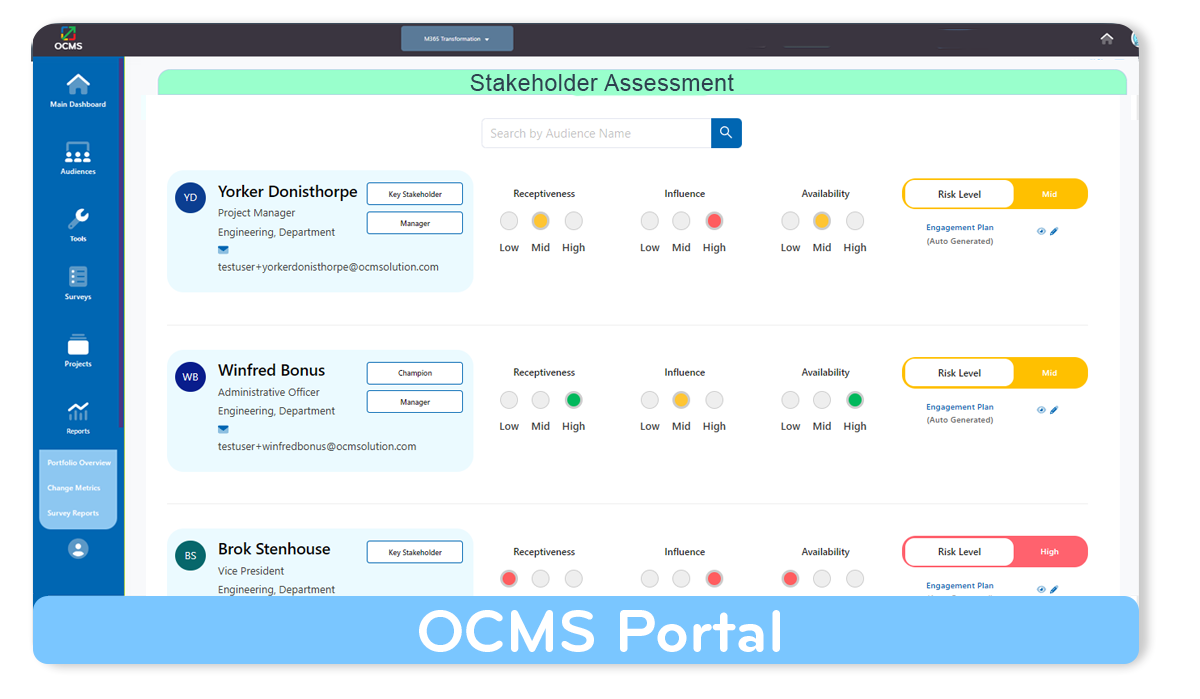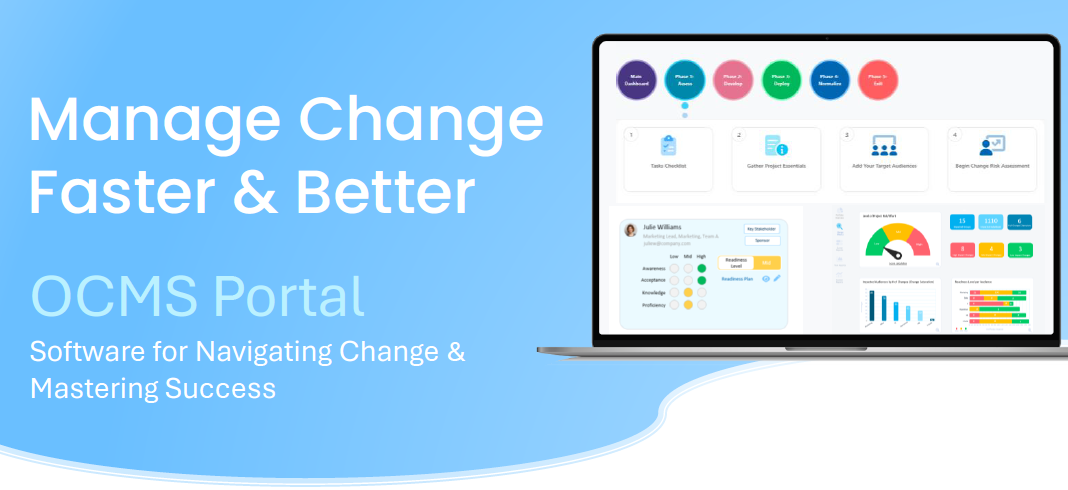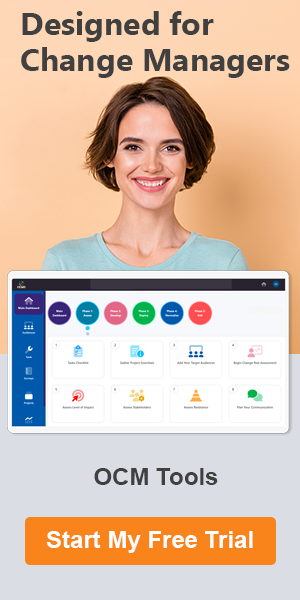Mastering the Project Stakeholder Register: A Quick Guide
Project success isn’t just about hitting deadlines or staying within budget—it’s about managing relationships. One of the most powerful tools for navigating these relationships in both project and change management is a project stakeholder register.
Whether you’re managing a large-scale corporate change or delivering a complex project, keeping track of the people who can influence or be influenced by your project is critical.
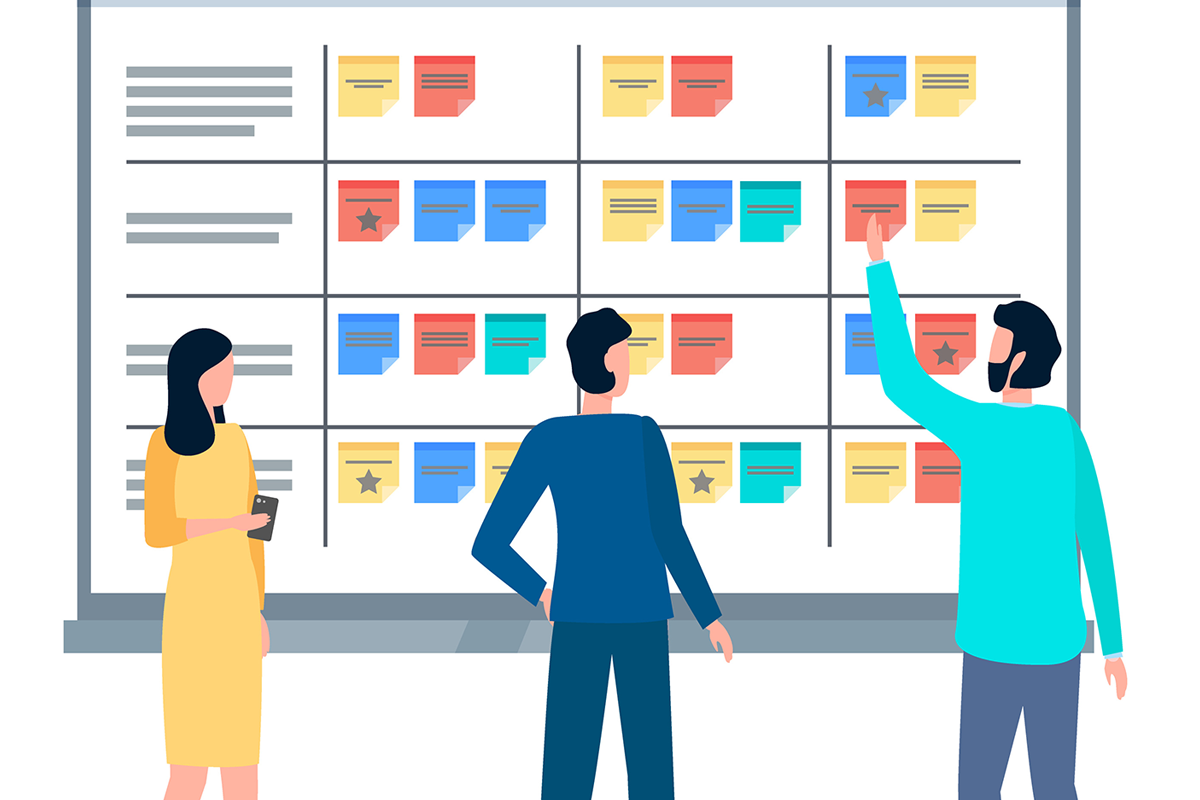
But what exactly is a project stakeholder register template, and why should it be an integral part of your project toolkit? In this article, we’ll explain the importance of a stakeholder register, how to create one, and provide an example of a stakeholder register to guide you.
Story Highlights
|
What is a Stakeholder Register?
A project stakeholder register is a form, document, or cloud tool that captures information about the individuals, groups, or organizations that have a stake in your project. In other words, they are impacted in some way by the project. A stakeholder register sample template helps you identify who these stakeholders are, their roles, levels of influence, and expectations.
In essence, it’s a living record that you should reference throughout the project lifecycle. As the project evolves, so do the interests and influences of your stakeholders, making it essential to keep this document updated.
But a project management stakeholder register isn’t just a list of names—it provides critical insights into how you should communicate with each stakeholder, the level of engagement needed, and potential risks that could arise if they are not properly managed.
Do you have any questions or feedback about the example of stakeholder register in this article? Are you looking for a good project management stakeholder register? Please reach out and let us know.
The Importance of a Stakeholder Register in Project Management
Why is a project stakeholder register template crucial for managing a project or change initiative? The answer lies in the ripple effect that stakeholders have on project outcomes. Let’s break down the key reasons:
1. Improved Communication
With a detailed stakeholder register, you know exactly who your stakeholders are, what they expect, and how to communicate with them. This reduces misunderstandings and ensures everyone is on the same page. Different stakeholders require different communication strategies—executive sponsors may need high-level reports, while team members might require more detailed updates.
Without a stakeholder register template project management record, you risk missing important stakeholders or failing to address their needs effectively.
2. Stakeholder Alignment
A well-managed stakeholder register helps align stakeholders with your project’s goals and objectives. It ensures that all parties understand the project scope and are invested in its success. Alignment is especially critical when it comes to navigating change management, where resistance can significantly delay or derail a project.
3. Risk Management
Ignoring key stakeholders can be a significant risk. Your stakeholder register template should include information about stakeholder influence and receptiveness levels. Stakeholders with high influence but low receptiveness can present risks if they become disengaged or misaligned. By understanding their priorities, you can develop strategies to mitigate these risks.
4. Enhanced Decision-Making
A project management stakeholder register template allows change managers to make informed decisions. Knowing which stakeholders are most influential can help prioritize resources and guide decision-making processes that will have a more significant impact on the project’s outcome.
Please let us know if you have any questions about this article’s example stakeholder register, a sample stakeholder register in project management, or what is stakeholder register. We’ll be happy to help.
How to Create a Sample Stakeholder Register
Creating an example stakeholder register doesn’t have to be a daunting task. By following a structured process and using a stakeholder register template, you can build a valuable tool that will guide your interactions throughout the project. Here’s a step-by-step guide:
1. Identify Stakeholders
The first step in creating a project stakeholder register template is to identify everyone who has a stake in the project. These stakeholders can be internal (such as team members or department heads) or external (such as clients, vendors, or regulatory bodies).
Ask yourself:
- Who will be impacted by this project?
- Who has influence over the project’s outcome?
- Who has decision-making authority?
Don’t forget to include indirect stakeholders—those who may not be involved in day-to-day operations but will feel the effects of the project’s success or failure.
2. Classify Stakeholders
Once you’ve identified your stakeholders, the next step is to classify them based on their power and receptiveness in the project. A common tool used for this is the stakeholder analysis. It helps you identify risks for stakeholders based on:
- Receptiveness
- Influence
- Availability
Another way to classify stakeholders for your example of stakeholder management register is to categorize them into stakeholder types. Some stakeholder types, such as Sponsors, will need a specific type of engagement, different from other stakeholders.
Some of the stakeholder types you may use in your stakeholder analysis register are:
- Sponsor
- Champion
- Manager
- Key Stakeholder
- Impacted end-user
3. Document Stakeholder Information
A robust stakeholder register template should capture key information for each stakeholder, such as:
- Name and role: Clearly identify each stakeholder’s position.
- Contact details: Ensure you have accurate information for communication.
- Level of influence: How much control or authority does this stakeholder have?
- Level of receptiveness: How invested are they in the project’s outcome? Is there resistance?
- Preferred communication methods: This helps tailor your communication strategy to individual preferences.
- Notes on behavior: Any important behavioral or personal traits that might affect how they respond to the project.
4. Develop Engagement Strategies
Once you’ve filled out your project stakeholder register example, it’s time to determine how you’ll engage with each stakeholder. High-influence stakeholders may need more frequent updates and face-to-face meetings, while low-influence stakeholders might be content with periodic emails.
Engagement strategies should also include how you’ll handle stakeholders who may resist the project or oppose certain aspects. Knowing in advance how to manage potential conflicts can save you time and reduce project friction.
5. Regularly Update the Project Stakeholder Register
A project stakeholder register template is a dynamic document that should evolve as the project progresses. Stakeholders’ interests may change, or new stakeholders might emerge. Schedule periodic reviews of the register to ensure that all information is current and that you’re not overlooking any key players.
Please let us know if you’re looking for a sample of stakeholder register template, stakeholder register template project management app, stakeholder management register, or project management stakeholder register template.
Example of a Stakeholder Register
To give you a clearer picture of what a stakeholder register looks like, here’s a simplified example of a stakeholder register for a corporate change initiative:
| Name | Role | Influence | Support | Comm Strategy |
| John Smith | Executive Sponsor | High | High | Weekly updates, in-person meetings |
| Jane Doe | Department Manager | Medium | High | Bi-weekly emails, status reports |
| Bob Johnson | IT Consultant | Low | Medium | Monthly calls, email updates |
| Regulatory Body | External Stakeholder | High | Low | Quarterly reports, formal meetings |
This is a simplified version, but in practice, you’ll want to include more detailed information about stakeholder behavior, risks, and types.
Below are screenshots from OCMS Portal’s Target Audience Tool and Stakeholder Analysis Tool. This example of stakeholder register options enables you to be more detailed in the types of information you track about stakeholders.
Two Examples of Stakeholder Register in Project Management
Are you still wondering what is stakeholder register in project management? Do you have examples of stakeholder register in project management? Please reach out, we’d love to hear from you!
Final Thoughts on the Importance of a Stakeholder Register
A project stakeholder register is not just a nice-to-have; it’s a critical tool for the success of any project. By identifying, classifying, and engaging your stakeholders effectively, you not only mitigate risks but also increase the chances of your project delivering real value.
Don’t let your next project get derailed by poor communication or overlooked stakeholders. Use a project stakeholder register template to create your own register or use an OCM tool like OCMS Portal, and refer to it regularly throughout the project lifecycle.
By understanding the importance of a stakeholder register and implementing one effectively, you can improve communication, manage risks, and enhance decision-making—driving your projects toward success.
Top Change Management Software with Stakeholder Register
Save time by using an end-to-end change management tool that automates as much as 80% of your OCM work. OCMS Portal is a top change management platform, used by Fortune 100 & 500 companies. It includes a customizable stakeholder register, insightful analytics, and keeps all your change management activities in a single place.
FAQ: What Is a Stakeholder Register in Project Management?
What is stakeholder register?
A project stakeholder register is a form, document, or cloud tool that captures information about the individuals, groups, or organizations that have a stake in your project.
What types of information should you capture in a sample of stakeholder register template?
The key things you should list in your project stakeholder register sample are the individuals’ names, roles, level of influence on the project, level of receptiveness, and contact for communication (e.g. email address). You may also wish to list stakeholder type and preferred communication method.
What is the importance of stakeholder register templates?
The importance of stakeholder register captures is directly tied to project outcome. A project stakeholder register is a critical tool for the success of any project. By identifying, classifying, and engaging your stakeholders effectively, you mitigate risks and increase the chances of your project meeting its objectives and ROI.
Note: Content on OCM Solution's ocmsolution.com website is protected by copyright. Should you have any questions or comments regarding this OCM Solutions page, please reach out to Ogbe Airiodion (Change Management Lead) or the OCM Solutions Team today.
External Sources: stock.adobe.com




